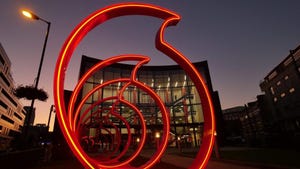Nokia has made a jump-start on the low-band 600MHz spectrum, through completing the first pre-standard 600MHz LTE call using commercially-available hardware.
March 23, 2017

Nokia has made a jump-start on the low-band 600 MHz spectrum, through completing the first pre-standard 600 MHz LTE call using commercially-available hardware.
The 600 MHz is an attractive one to the FCC and operators primarily because of the range which it offers in terms of mobile broadband. When you look at the vast expanse of the US and the number of rural communities which are currently being underserved in an increasingly digital world, the band becomes even more attractive.
The problem arises in the fact this band is already being used by traditional broadcasters, resulting in a complicated auction where the operators have to meet the financial demands of the broadcasters to access the attractive spectrum. The whole saga presented the broadcasters with an opportunity to cash-in, and they did it in style, setting the ‘clearing cost’ for the auction at $86.4 billion, roughly $686 million per MHz.
“We’ve been anticipating the end of the 600 MHz auction, and we haven’t waited,” said Ricky Corker, Head of North America for Nokia. “Nokia has been doing the necessary development, testing and software creation over the last several quarters. We are ready to work from day one with those customers who want to bring 600 MHz to market.”
Nokia is backing a successful auction, believing operators will use this spectrum to extend LTE footprints, augment capacity and improve data speeds in rural areas. The test demonstrated there certainly is potential for the band, with Nokia claiming it achieved the following:
A complete end-to-end LTE call using a test device
20MHz frequency block on the 600 MHz band
Maximum throughput of 387Mbps
4 way uplink receive diversity
4X4 MIMO technology
256 QAM
While Nokia is trying to get a jump-start on the area, whether this turns out to be a false start remains to be seen. The broadcasters certainly have set their demands on the high-end, and if the appetite is not present at the auction, it isn’t yet clear what will happen if the spectrum remains unsold.
Will the band be handed back to the broadcasters or will it remain unclaimed and unused? It’s a grey area, but that is keeping in style with bureaucrats to date.
About the Author(s)
You May Also Like








.png?width=300&auto=webp&quality=80&disable=upscale)


_1.jpg?width=300&auto=webp&quality=80&disable=upscale)


.png?width=800&auto=webp&quality=80&disable=upscale)